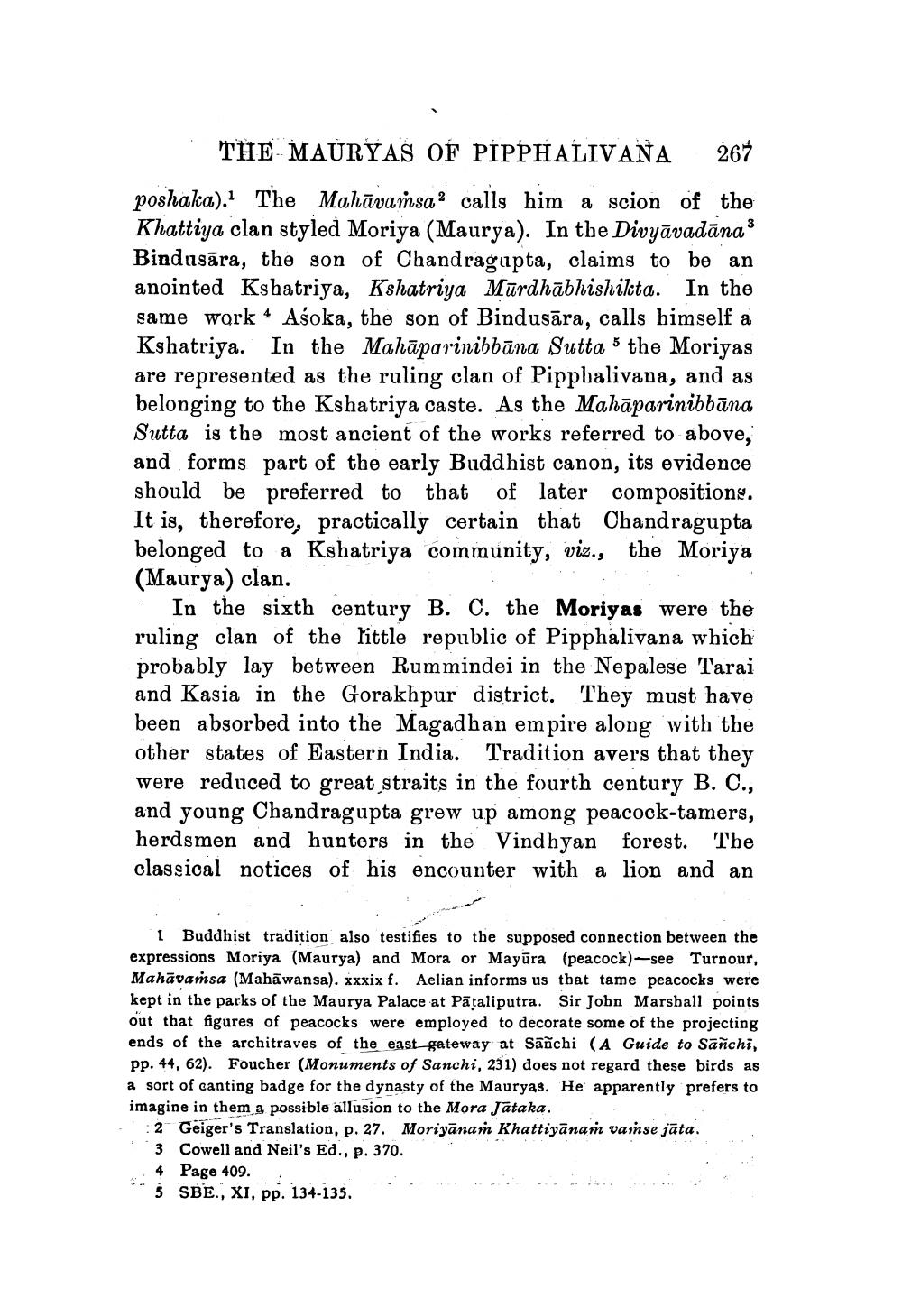________________
THE MAURYAS OF PIPPHALIVANA
267
poshaka). The Mahavamsa calls him a scion of the Khattiya clan styled Moriya (Maurya). In the Divyāvadāna3 Bindusara, the son of Chandragupta, claims to be an anointed Kshatriya, Kshatriya Murdhabhishikta. In the same work Aśoka, the son of Bindusara, calls himself a Kshatriya. In the Mahaparinibbana Sutta 5 the Moriyas are represented as the ruling clan of Pipphalivana, and as belonging to the Kshatriya caste. As the Mahaparinibbāna Sutta is the most ancient of the works referred to above, and forms part of the early Buddhist canon, its evidence should be preferred to that of later compositions. It is, therefore, practically certain that Chandragupta belonged to a Kshatriya community, viz., the Moriya (Maurya) clan.
In the sixth century B. C. the Moriyas were the ruling clan of the little republic of Pipphalivana which probably lay between Rummindei in the Nepalese Tarai and Kasia in the Gorakhpur district. They must have been absorbed into the Magadhan empire along with the other states of Eastern India. Tradition avers that they were reduced to great straits in the fourth century B. C., and young Chandragupta grew up among peacock-tamers, herdsmen and hunters in the Vindhyan forest. The classical notices of his encounter with a lion and an
1 Buddhist tradition also testifies to the supposed connection between the expressions Moriya (Maurya) and Mora or Mayura (peacock)-see Turnour, Mahavamsa (Mahawansa). xxxix f. Aelian informs us that tame peacocks were kept in the parks of the Maurya Palace at Pataliputra. Sir John Marshall points out that figures of peacocks were employed to decorate some of the projecting ends of the architraves of the east gateway at Sanchi (A Guide to Sanchi, pp. 44, 62). Foucher (Monuments of Sanchi, 231) does not regard these birds as a sort of canting badge for the dynasty of the Mauryas. He apparently prefers to imagine in them a possible allusion to the Mora Jātaka.
2 Geiger's Translation, p. 27. Moriyanam Khattiyanam vamse jäta. 3 Cowell and Neil's Ed., p. 370.
4 Page 409.
5 SBE., XI, pp. 134-135.
..




